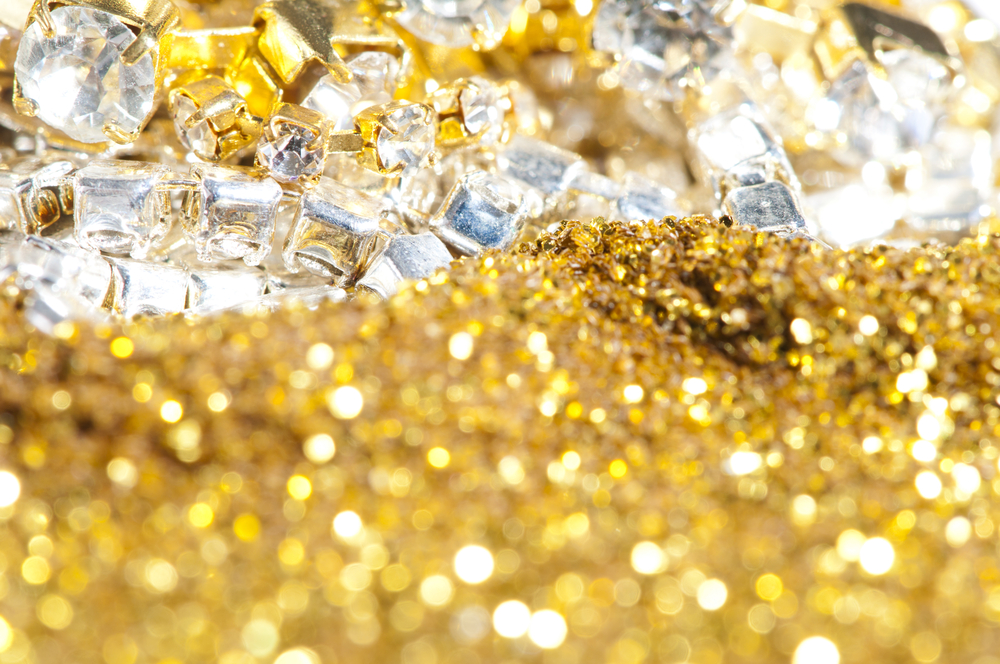Which Is Rarer: Gold or Diamonds?


Diamonds are forever, and gold is precious, but which is rarer? And does that rarity have anything to do with the price we see at a jewelry store?
The answer, it turns out, isn't as "clear-cut" as you might think.
Gold — a heavy metal — is one of Earth's rarer elements, formed in the collisions of neutron stars, said Ulrich Faul, an Earth scientist and professor at the Massachusetts Institute of Technology.
Then, during the formation of Earth, the heaviest elements gravitated toward Earth's core, said Yana Fedortchouk, an Earth sciences professor and co-director of the Experimental High-Pressure Geological Research Laboratory at Dalhousie University in Halifax, in the Canadian province of Nova Scotia. That means that up near the Earth's crust, large amounts of gold are hard to find. [Photos Dazzling Minerals and Gems]
You can find it, though, in low concentrations. It's "present in a large variety of rocks in the crust," Fedortchouk told Live Science. "But in order to form a deposit, it needs to reach certain concentrations to make mining economically feasible."
According to Fedortchouk, the average concentration of gold in Earth's crust is "very, very low," at 4 parts per billion. In order to produce any minable concentration of gold that could be of market value, the gold deposit would have to be 1,250 times more concentrated, she said.
Diamonds, on the other hand, are a highly pressurized form of a very common element: carbon. In its non-pressurized form, it's known as graphite — the stuff in pencils. Compared with gold, the average concentration of carbon in Earth's crust is approximately 200,000 parts per billion, according to "Fluids in the Earth's Crust: Their Significance in Metamorphic, Tectonic, and Chemical Transport Processes" (Elsevier Science Ltd., 1978), a book written by the noted geologist William Fyfe, who died in 2013.
Get the world’s most fascinating discoveries delivered straight to your inbox.
So, the rarity of diamonds has little to do with their elemental composition; rather, the natural transformation of carbon into diamonds that can be mined is an extremely arduous (and rarely successful) process.
"Diamonds can only be produced in the Earth's mantle and somehow be brought to the surface, or they can be formed during meteorite impact," but those diamonds are small and never gems, Fedortchouk said. (The mantle is the layer of Earth beneath the crust.)"Diamonds formed deep in the Earth's mantle can be brought up by deep magma or pushed up during the slow uplift of deep rocks during mountain growth processes. But during slow uplift, diamonds get graphitized [turned into graphite] and never make it up to the surface as gem stones."
The formula required for diamonds to form depends on depth, temperature and pressure: Carbon is buried at least 93 miles (150 kilometers) beneath the Earth's surface, heated to about 2,200 degrees Fahrenheit (1,204 degrees Celsius) under approximately 725,000 pounds of pressure per square inch (5 billion pascals), and then rapidly brought to the surface by a volcanic eruption to cool. This extraordinary process makes natural, minable diamonds rarer than gold, Fedortchouk said.
But, in its elemental form, gold is significantly rarer than diamonds, Faul told Live Science. After all, carbon is one of the most abundant elements on Earth — especially in comparison to heavier metals like gold — and diamond is simply composed of carbon under immense pressure.
The invention of synthetic diamonds complicates the question even further. Scientists can re-create the conditions necessary to transform graphite into diamonds in a lab — no volcanic eruption necessary — but the same can't be said for gold (sadly, alchemy is still a pseudoscience). Even though synthetic diamonds are made of the same substance as natural diamonds, according to diamond designer Ritani, synthetic diamonds usually sell for 30 percent less on the market because they aren't considered as valuable.
But does the mere existence of lab-created diamonds make these gems more common than we thought? Faul argues that it does: "Diamonds below a certain size are not worth mining in the first place," he said. "Who wants to buy a diamond that needs a magnifying glass to be seen? Gold is more abundant than large diamonds, but diamonds as a class of material are not particularly rare. I think part of their reputation has to do with amazing public relations!"
Originally published on Live Science.


